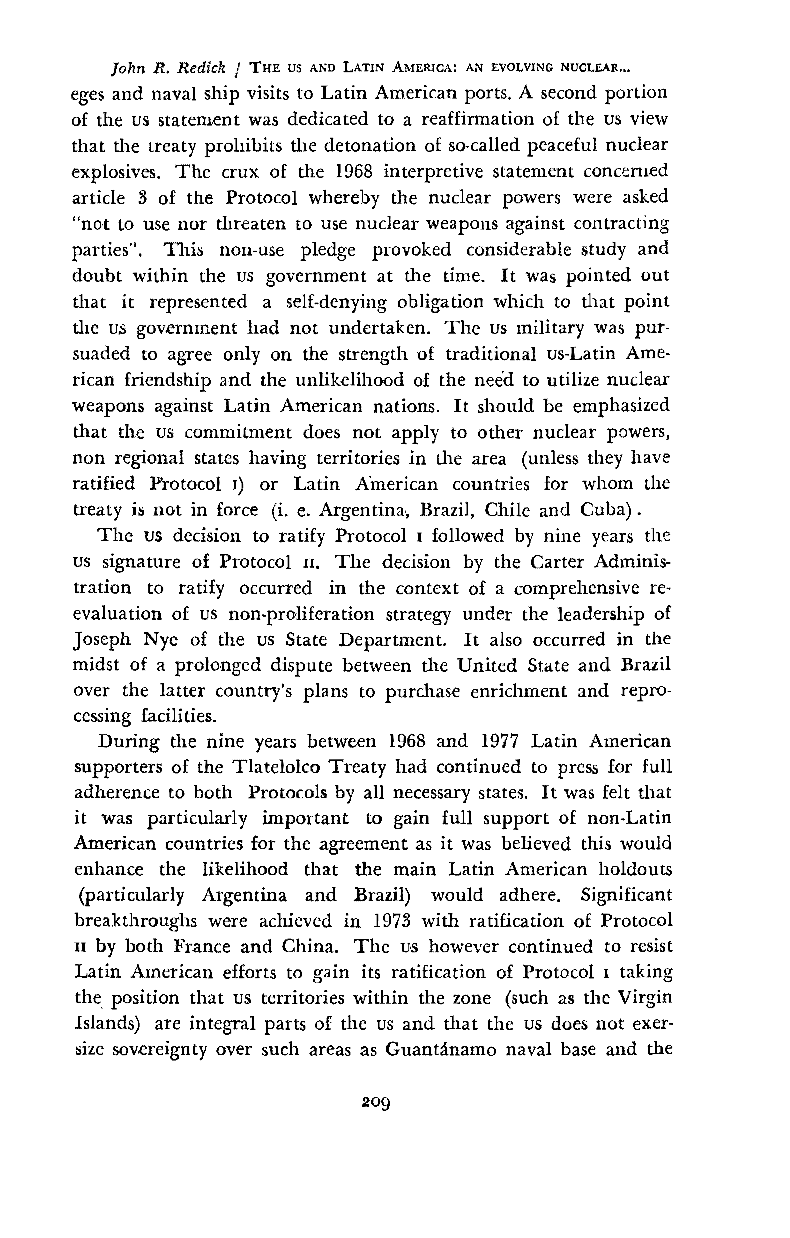
John R. Redick
J
THE US
AKD LATIN AMERICA: AN EVOLVING NUCLEAR•••
eges and naval ship visits to Latin American ports. A second portion
of the us statement was dedicated to a reaffirmation of the us view
that the treaty prohibits the detonation of so-called peaceful nuclear
explosives. The crux of the 1968 interpretive statement concerned
article 3 of the Protocol whereby the nuclear powers were asked
"nOl to use nor threaten to use nuclear weapons against contracting
parties". This non-use pledge provoked considerable study and
doubt within the us government at the time. It was pointed out
that
it
represented a self-denying obligation which to that point
tile us government had not undertaken. The us military was pur–
suaded to agree only on the strength of traditional us-Latin Ame–
rican friendship and the unlikelihood of the neéd to utilize nuclear
weapons against Latin American nations. It should be emphasized
that the us commitment does not apply
to
other nuclear powers,
non regional states having territories in the area (unless they have
ratified Protocol
1)
or Latin American countries for whom tIle
treaty is not in force
(i.
e. Argentina., Brazil, Chile and Cuba).
The us decision to ratify Protocol
1
followed by nine years the
us signature oí Protocol n. The decision by the Carter Adminis–
tration to ratify occurred in the context of a comprehensive re–
evaluation of us non-proliferatíon strategy under the leadership of
Joseph Nye of the us State Department. It also occurred in the
midst of a prolonged dispute between the United State and Brazil
over the latter country's plans to purchase enrichment and repro–
cessing facilities.
During the nine years between 1968 and 1977 Latin American
supporters of the Tlatelolco Treaty had continued to press for full
adherence
to
both Protocols by all necessary states. It was felt that
it was particularly important to gain full support of non-Latin
American countries fur the agreement as
it
was believed this would
enhance the likelihood that the main Latin American holdouts
(particularly Argentina and Brazil) would adhere. Significant
breakthroughs were achieved in 1973 with ratification of Protocol
n by both France and China. The us however continued to resist
Latin American efforts to gain its ratificatíon of Protocol
1
takíng
the. position that us terrÍtories within the zone (such as the Virgin
Islands) are integral parts of the usand that the us does not exer–
size sovereignty over such areas as Guantánamo naval base and the
20
9


